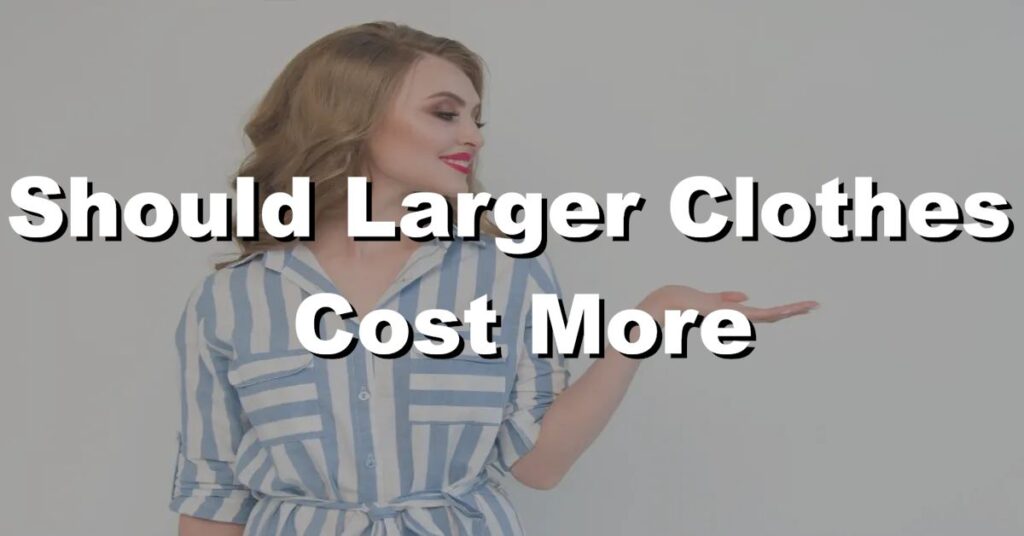It’s a debate that’s been going on for years – should larger clothes cost more than smaller sizes?
In this blog post, we’ll discuss the reasons behind the price difference and whether it’s fair or not.
Ethical Dilemma of Size-Inclusive Pricing in Fashion
The fashion industry has long been plagued by the ethical dilemma of size-inclusive pricing. Many brands charge higher prices for plus-size clothing compared to standard sizes, creating a disparity that raises questions of fairness and inclusivity.
This pricing practice can be seen as discriminatory, as it penalizes individuals who wear larger sizes simply for their body type. It reinforces harmful stereotypes and contributes to body shaming. Size-inclusive pricing also perpetuates the idea that certain body sizes are less desirable or less valuable.
To address this ethical dilemma, the fashion industry needs to adopt more inclusive pricing strategies that treat all customers equally, regardless of their size.
Rise of Size-Inclusive Fashion Brands and Their Pricing Strategies
In recent years, there has been a positive shift in the fashion industry with the rise of size-inclusive fashion brands. These brands recognize the need for clothing that caters to diverse body sizes and shapes. However, when it comes to pricing strategies, challenges persist.
While some size-inclusive brands prioritize fair pricing for all sizes, others struggle to find a balance due to various factors such as production costs and economies of scale.
It is crucial for size-inclusive brands to adopt pricing strategies that reflect inclusivity, transparency, and fairness, ensuring that all customers have access to stylish and well-fitting clothing without facing financial discrimination.
The Fashion Industry’s History of Excluding Plus-Size Bodies
The fashion industry’s history is marred by a long-standing practice of excluding plus-size bodies. Mainstream fashion brands have traditionally catered to a narrow range of body sizes, perpetuating unrealistic beauty standards and marginalizing individuals who do not fit into those standards.
This exclusionary approach has left many plus-size individuals with limited options and a lack of representation. The fashion industry must acknowledge and confront its history of exclusion to foster a more inclusive and diverse environment.
By challenging existing norms and embracing body diversity, fashion can become a powerful force for positive change and inclusivity.
The Need for Greater Representation of Plus-Size Models and Designers in Fashion
To create a more inclusive and equitable fashion industry, there is a critical need for greater representation of plus-size models and designers. The lack of visibility and opportunities for plus-size individuals in these roles perpetuates the exclusionary practices of the industry.
By featuring plus-size models in campaigns and runway shows, fashion brands can challenge traditional beauty standards and inspire body confidence in consumers.
Additionally, supporting and promoting plus-size designers can lead to the creation of clothing lines that cater specifically to diverse body types, ensuring that all individuals have access to fashionable and well-fitting garments.
The Disparity Between the Small Size of Baby Clothes and Their Price
One notable example of an ethical dilemma in the fashion industry is the disparity between the small size of baby clothes and their price. Baby clothing tends to be significantly smaller in size compared to adult clothing, yet the price per item is often similar or even higher.
This raises concerns about fairness and exploitation, as consumers are paying a premium for less fabric and material. It is important for brands and retailers to reassess their pricing strategies for baby clothes to ensure transparency and fairness.
By offering reasonably priced baby clothing that reflects the actual cost of production, the fashion industry can uphold ethical standards and provide affordable options for parents and caregivers.
Conclusion
In conclusion, clothing companies should not charge more for larger sizes.
Body shaming and discrimination against individuals of different sizes should not be tolerated. We must promote inclusivity in all aspects of life, including fashion.

